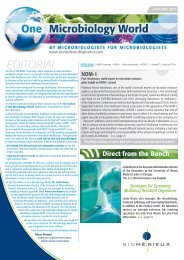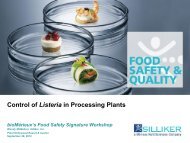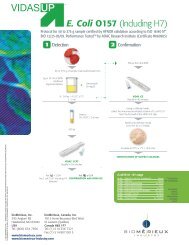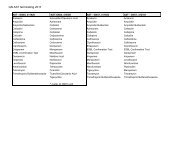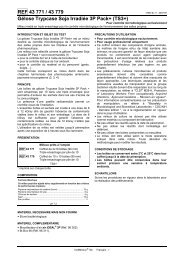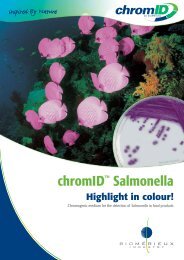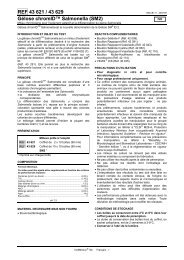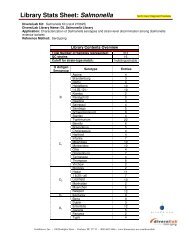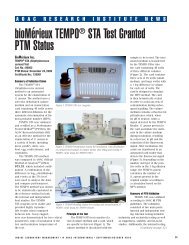Antibiotic Classification and Modes of Action - bioMerieux
Antibiotic Classification and Modes of Action - bioMerieux
Antibiotic Classification and Modes of Action - bioMerieux
You also want an ePaper? Increase the reach of your titles
YUMPU automatically turns print PDFs into web optimized ePapers that Google loves.
Customer Education <strong>Antibiotic</strong> <strong>Classification</strong><br />
2. Inhibitors <strong>of</strong> Protein Synthesis<br />
Mode <strong>of</strong> <strong>Action</strong> - Aminoglycosides<br />
Ribosome<br />
© bioMérieux, Inc., Customer Education<br />
March 2008<br />
Abnormal protein<br />
RNA + aminoglycoside<br />
Aminoglycosides bind to the RNA <strong>of</strong> the 30S ribosomal sub-unit.<br />
The resulting change in ribosome structure affects all stages <strong>of</strong> normal<br />
protein synthesis.<br />
• Initiation step <strong>of</strong> translation<br />
• Blocks elongation <strong>of</strong> peptide bond formation<br />
• Release <strong>of</strong> incomplete, toxic proteins<br />
Translational errors are frequent <strong>and</strong> many non-functional or toxic<br />
proteins are produced. The incorporation <strong>of</strong> such abnormal proteins into<br />
the cytoplasmic membrane compromises its function.<br />
The bactericidal activity <strong>of</strong> aminoglycosides ultimately stops protein<br />
synthesis <strong>and</strong> dramatically damages the cytoplasmic membrane.<br />
56



